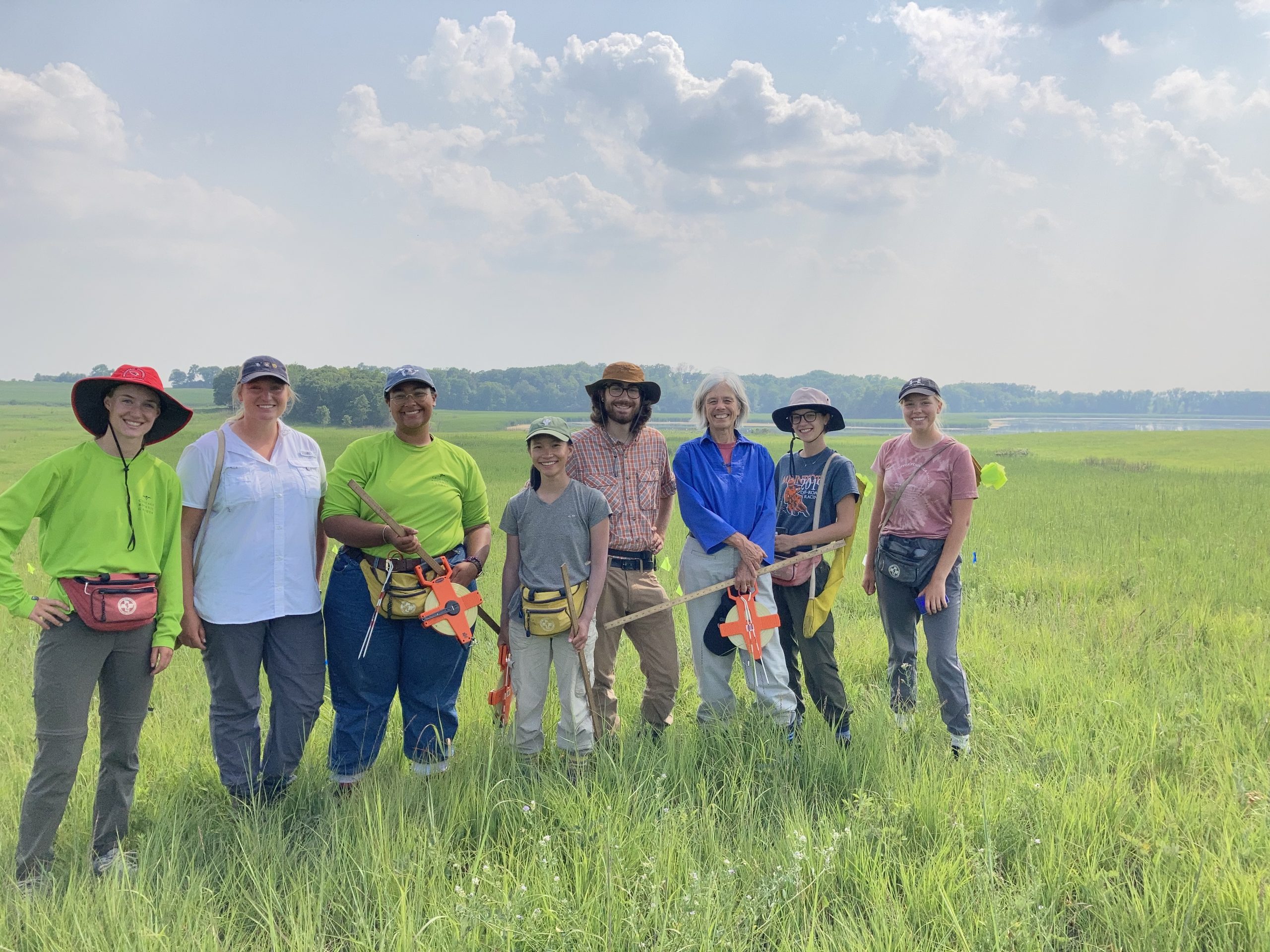Echinacea pallida flowering phenology: Echinacea pallida is a species of Echinacea that is not native to Minnesota. It was mistakenly introduced to our study area during a restoration of Hegg Lake WMA. Since 2011, Team Echinacea has visited the pallida restoration, taken flowering phenology, and collected demography on the non-native. We have decapitated all flowering E. pallida each year to avoid cross-pollination with the local Echinacea angustifolia. Each year, we record the number of heads on each plant and the number of rosettes. We also get precise gps coordinates of all plants and then chop the flowering heads off! This year, we cut E. pallida heads off on July 6th and 8th. We shot gps points as they were found; in the fall, we revisited the plants and did not find any stragglers.
Overall, we found and shot 143 flowering E. pallida plants, and 433 heads in total, averaging 3.02 heads per plant. The average rosette count was 5, the maximum was 27 rosettes — absolutely massive!! When recording data on E. pallida, we forgot that we needed phenology data, so the data from the 6th does not have any phen at all, and the data from the 8th is in the demo form in notes as a string. We do not have very accurate data on phenology of E. pallida this year, but our estimated first day flowering is June 22nd.
Pallida demo/cut/surv involved 7 different people working a total of 1170 minutes (19.5 hours) on 3 separate days.
Location: Hegg Lake WMA Start year: 2011
You can find more information about E. pallida flowering phenology and previous flog posts on the background page for the experiment.
exPt6: Experimental plot 6 was the first E. angustifolia x E. pallida hybrid plot planted by Team Echinacea. A total of 66 Echinacea hybrids were originally planted; all have E. angustifolia dams and E. pallida sires. In 2021, we visited 31 positions and found 15 living plants. No plants have flowered in this plot yet.
Location: near exPt8 Start year: Crossing in 2011, planting in 2012
You can find more information about experimental plot 6 and previous flog posts about it on the background page for the experiment.
exPt7: Planted in 2013, experimental plot #7 was the second E. pallida x E. angustifolia plot. It contains conspecific crosses of each species as well as reciprocal hybrids. There were 294 plants planted. This summer, we visited 176, and of these plants, only 136 plants were still alive. There were 13 flowering plants this year! This is the most flowering plants that this plot has produced. These 26 flowering plants produced 26 heads. We have not yet used the pedigree data to see what number of these plants are hybrids or not.
Location: Hegg Lake WMA Start year: Crossing in 2012, planting in 2013
You can find more information about experimental plot 7 and previous flog posts about it on the background page for the experiment.
exPt9: Experimental plot 9 is a hybrid plot, but, unlike the other two hybrid plots, we do not have a perfect pedigree of the plants. That is because the E. angustifolia and E. pallida maternal plants used to generate seedlings for exPt9 were open-pollinated. We need to do paternity analysis to find the true hybrid nature of these crosses (assuming there are any hybrids). There were originally 745 seedlings planted in exPt9. We found 261 living plants in 2021, 20 of which were flowering, with 42 heads! There were 138 plants that we searched for but could not find.
Location: Hegg Lake WMA Start year: 2014
You can find out more information about experimental plot 9 and flog posts mentioning the experiment on the background page for the experiment.
Measuring p6/7/9 involved 8 different people working a total of 1380 minutes (23 hours) on 2 separate days.
Experimental plots 6, 7, and 9 all burned this year. The peak in number of flowering plants in both p7 and p9 this year is indicative of the effect fire can have on flowering in Echinacea. In the past we have bagged heads in these plots but this year we did not.
Overlaps with: demographic census in remnants
Data collected for exp679: For all three plots, we collected rosette number, length of all leaves, and herbivory for each plant. We used visors to collect data electronically, and it is still being processed to be put into our SQL database.
Data collected for E. pallida demography and phenology: Demography data, head counts, rosette counts, gps points shot for each E. pallida. Find demo and phenology visor records in the aiisummer2021 repository. GPS coordinates can be found in demap. As mentioned above, all phenology data from July 8th can be found in demo. For more details, see aiiSummer2021/demo/pallidaPhen.R.


Leave a Reply